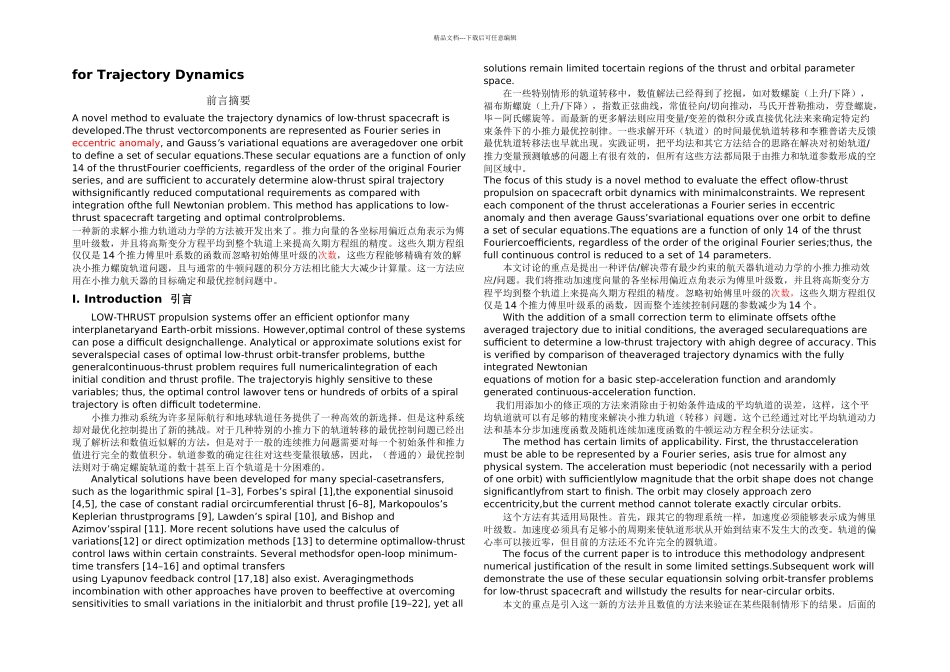精品文档---下载后可任意编辑for Trajectory Dynamics前言摘要A novel method to evaluate the trajectory dynamics of low-thrust spacecraft is developed.The thrust vectorcomponents are represented as Fourier series in eccentric anomaly, and Gauss’s variational equations are averagedover one orbit to define a set of secular equations.These secular equations are a function of only 14 of the thrustFourier coefficients, regardless of the order of the original Fourier series, and are sufficient to accurately determine alow-thrust spiral trajectory withsignificantly reduced computational requirements as compared with integration ofthe full Newtonian problem. This method has applications to low-thrust spacecraft targeting and optimal controlproblems.一种新的求解小推力轨道动力学的方法被开发出来了。推力向量的各坐标用偏近点角表示为傅里叶级数,并且将高斯变分方程平均到整个轨道上来提高久期方程组的精度。这些久期方程组仅仅是 14 个推力傅里叶系数的函数而忽略初始傅里叶级的次数,这些方程能够精确有效的解决小推力螺旋轨道问题,且与通常的牛顿问题的积分方法相比能大大减少计算量。这一方法应用在小推力航天器的目标确定和最优控制问题中。I. Introduction 引言LOW-THRUST propulsion systems offer an efficient optionfor many interplanetaryand Earth-orbit missions. However,optimal control of these systems can pose a difficult designchallenge. Analytical or approximate solutions exist for severalspecial cases of optimal low-thrust orbit-transfer problems, butthe generalcontinuous-thrust problem requires full numericalintegration of each initial condition and thrust profile. The trajectoryis highly sensitive to these variables; thus, the optimal control lawover tens or hundreds of orbits of a spiral trajectory is often difficult todetermine.小推力推动系统为许多星际航行和地球轨道任务提供了一种高效的新选择。但是这种系统却对最优化控制提出了新的...


